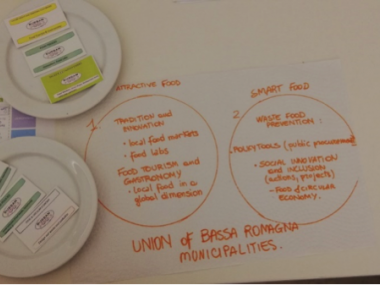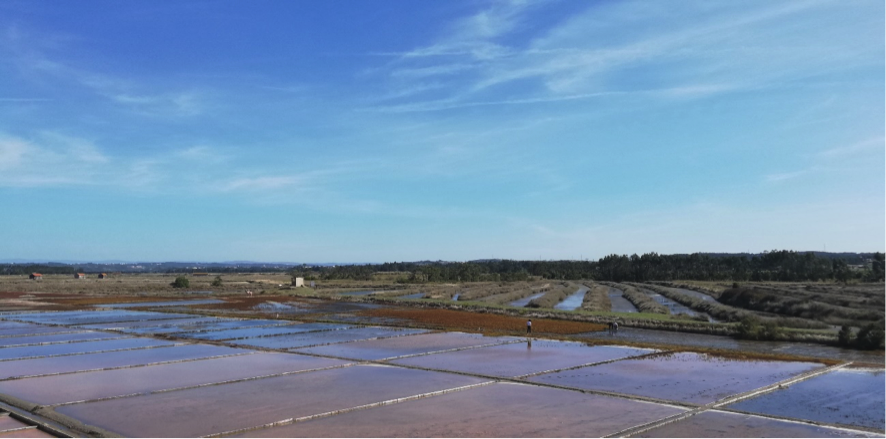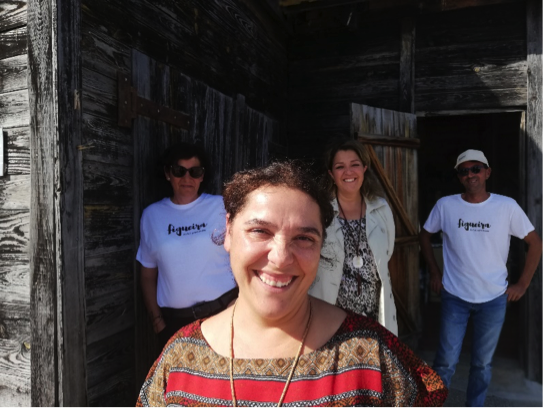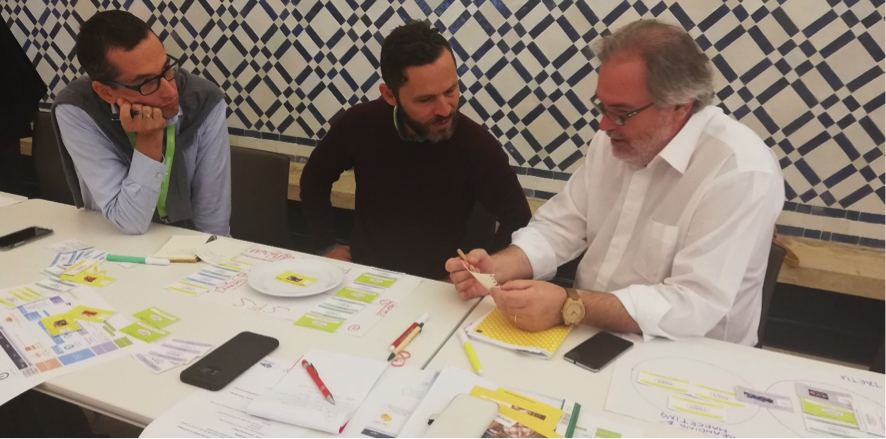A rural-urban connection to embed food in all policies
Edited on
05 February 2020Exponential growth in the planet’s population and its predominantly urban character are characteristics of our modern world. How are we going to feed this mainly urban population?

A Sitopian approach, developed by Carolyn Steel, could be one way to avoid a dystopian agri-future. FOOD CORRIDORS utilises these ideas of existing flows around the food chain, the territory, the resources and actors involved in a functional area.
"Sitopia" is a combination of the Greek words sitos (food) and topos (place). The re-territorialisation of food systems involves revitalising and strengthening the local rural and urban connection. This is regardless of whether or not they are associated with certain spatial infrastructures or formally organised administrative structures.
Given the cross-cutting nature of societal needs, problems and impacts linked to food production, transport, consumption and waste management this logically requires food policy to be embedded in all other policies (FIAP).

FOOD CORRIDORS
FOOD CORRIDORS is an initiative which seeks to exploit the strengths and opportunities of this rural-urban relationship. It leverages this territorial basis to integrate vertically and horizontally policies.
FOOD CORRIDORS is located in eight European countries. Four partners in the network have an intermunicipal structure. CIM COIMBRA, Lead Partner for the project, brings together 19 Portuguese municipalities. They share a particular concern about the issue of shrinking cities/territories. CIM COIMBRA aims, through several projects, to facilitate via public procurement and other strategies a local transition from a linear to a circular economy.
The Unione dei Comuni della Bassa Romagna is a group of 9 Italian municipalities. Within the framework of FOOD CORRIDORS they will create a sustainable 360º food vision. They will place special attention on growing their productive sector in an inclusive and innovative way. Gastronomy, landscape and tourism have been identified as unifying elements around which they can promote their territorial identity brand.
In the Slovenian region of Gorenjsk, home to more than 200,000 inhabitants, the Regional Development Agency BSC KRANJ is implementing a territorial programme in which food and rural development are priorities. Through FOOD CORRIDORS they aspire to energise the value chain by promoting integration among actors, citizen participation and connections with other sectors.
The fourth supra-municipal structured partner is the Tartu County Development Association (TAAS) in Estonia. The area houses more than 150,000 inhabitants, of whom 93,000 live in the city of Tartu. This city already has a very dynamic gastronomic sector. TAAS wants to build upon to give it a regional focus. It considers health promotion, creation of experiences, innovation and creativity to be fundamental to this new regional strategy.
Cordoba (Spain) and Larissa (Greece) are two medium-sized cities linked to a very powerful agri-food sector.
Cordoba aims to promote within the framework of FOOD CORRIDORS a healthy and sustainable food system. This will reinforce the benefits gained from recent actions carried out through the "Feeding Cordoba" initiative. The city is a signatory to the Milano Urban Food Policy Pact and supports local food trade through seven municipal markets, a wholesale market and a network of competitive local shops.
Larissa is situated in the centre of Thessaly, the principal Greek food producing region. An important challenge it faces is how to energise the connection between the primary and tertiary sectors of the municipality. And how to integrate the territory’s food and environmental policies in the context of the territory new dynamics and urban functionalities. FOOD CORRIDORS is a part of their answer.
Alba Iulia (Romania), like Larissa, has previously participated in URBACT projects. It seeks to re-orientate their local food system towards a more sustainable model. To this end the city intends to carry out a smart strategy that integrates different stakeholder profiles and stimulates local food consumption under the umbrella of a gastronomic and tourist destination.
Finally, Szecseny is a small municipality located in the County of Nograd (Hungary). The municipality has made efforts to activate local plans with the support of small external investors. Ongoing initiatives have led to the creation of a small fruit juice processing plant. A programme to supply local food to the school canteen has also been set up. Through their participation in FOOD CORRIDORS they want to generate a learning model aimed at defining successful strategies for implementing short food channels.
THE FOOD CORRIDORS MENU
FOOD CORRIDORS creates a framework around those themes which can sustain territorial food strategies, as evidenced by the experiences of FAO, MUFPP, and other institutions.
The FOOD CORRIDORS thematic map is initially distributed around seven key themes, divided into some thirty sub-topics. The thematic map was presented to the network partners at the Kick off Meeting, held in Coimbra on 30 September and 1 October. The partners have been invited to prepare an initial project menu. Following on from this exercise, a first selection of priority topics have been identified and ranked by partners from highest to lowest priority, as follows:
 Culture and territorial food brands
Culture and territorial food brands- Food policies
- Short food supply chains
- Food and circular economy
- Environmental resources
- Healthy food systems
- Governance
This set of themes will be deepened during Phase II of the project.
Some external opportunities will also be seized. A good case in point is the 2021 celebration of the European Gastronomy Regions. Two partners of FOOD CORRIDORS are connected to this celebration in two European countries (Portugal and Slovenia). This opportunity could boost the interaction between European regions within and beyond the project.
Some of the partners of FOOD CORRIDORS may also benefit from the development of small pilot actions.
The whole network can also take advantage of the knowledge generated in other European projects working on the same topic and with approaches similar to the proposal of FOOD CORRIDORS, such as REFRAME and ROBUST.
The FOOD CORRIDORS space is now open, the table prepared and the aperitifs served. We invite you to prepare for the rest of the menu.
 Submitted by Antonio Zafra on
Submitted by Antonio Zafra on
